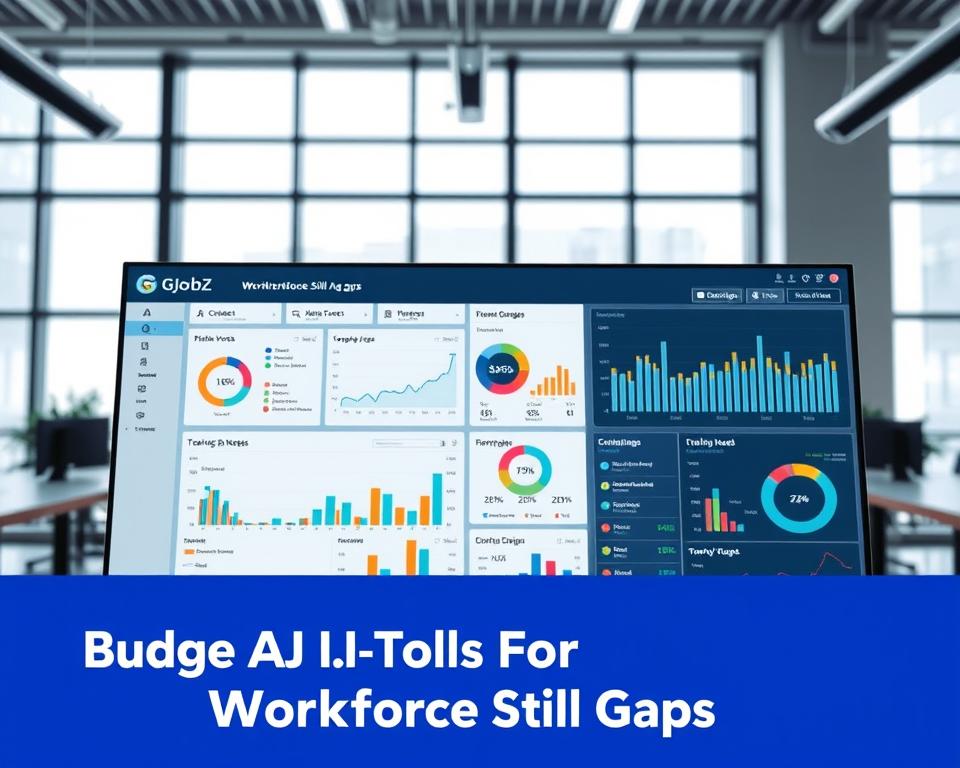
Budget AI Tools For Tracking Workforce Skill Gaps
Imagine knowing exactly which abilities your team lacks before projects stall or clients complain. With 83% of organizations facing critical skill shortages, smart companies now use affordable tech to stay ahead. Let’s explore how modern solutions turn guesswork into strategy.
Forward-thinking leaders leverage automated systems to map employee capabilities against business goals. Platforms like agyleOS and Leapsome analyze existing competencies while predicting future needs. This approach transforms how teams grow – no seven-figure investments required.
Why does this matter? Clear visibility into your crew’s strengths lets you:
- Align training with actual needs
- Prevent costly hiring mistakes
- Boost productivity through targeted development
We’ll break down top-rated systems that deliver enterprise-level insights without enterprise pricing. Discover how entomo and similar platforms integrate with your existing HR tech stack while providing real-time analytics. Ready to turn skills data into your secret weapon?
Key Takeaways
- Affordable platforms identify critical skill shortages proactively
- Data-driven planning reduces unnecessary hiring costs
- Integration capabilities minimize workflow disruption
- Real-time analytics support faster decision-making
- Scalable solutions grow with organizational needs
Introduction to Affordable AI Solutions for Workforce Skill Analysis
Modern businesses face a silent challenge: evolving faster than their teams can adapt. Skills gap analysis has become the compass for navigating this reality, with 72% of HR leaders calling it critical for survival. Unlike traditional methods, modern systems compare current abilities against market demands in real time.
These solutions scan resumes, performance data, and industry trends simultaneously. Management software then creates visual maps showing where teams excel versus where they struggle. One HR director noted: “We cut unnecessary training costs by 40% after implementing competency mapping.”
Three core benefits drive adoption:
- Pinpointing exact development needs per role
- Automating progress tracking across departments
- Predicting future capability requirements
Affordable platforms now offer features once exclusive to enterprise systems. Cloud-based interfaces integrate with popular HR tech stacks, while machine learning identifies patterns humans might miss. This shift enables smaller organizations to compete in talent development.
Our analysis focuses on systems that balance depth with simplicity. We evaluated platforms based on customization options, reporting clarity, and upgrade flexibility. The right choice turns scattered data into strategic roadmaps – without draining resources.
Understanding Workforce Skill Gaps and Their Impact
Unaddressed skill gaps silently drain company resources year after year. These disparities occur when employee skills don’t align with evolving role requirements or industry standards. Left unchecked, they create bottlenecks in project timelines and erode competitive edges.
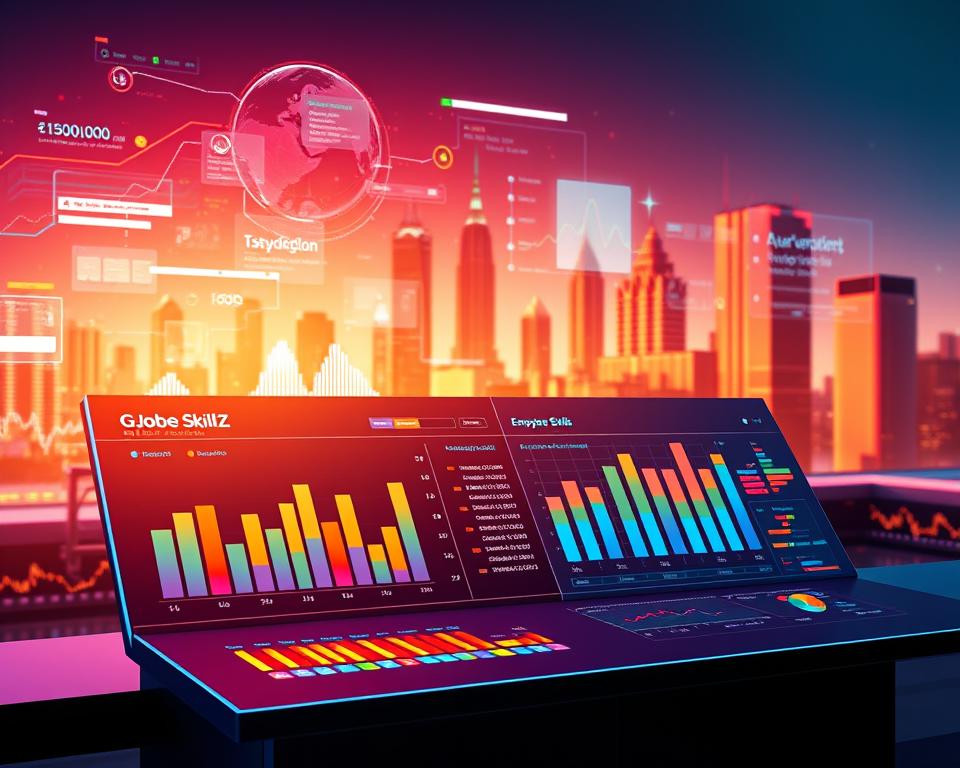
Research shows organizations with poor gap analysis processes experience 23% slower product launches. A manufacturing firm using iMocha discovered coding deficiencies in 68% of their engineering team – gaps that previously caused repeated quality control failures. Accurate analysis transforms these insights into action plans.
Three critical impacts emerge when competency shortages persist:
- Missed revenue targets due to delayed deliverables
- Increased burnout from skill-stretched staff
- Higher customer attrition from inconsistent outputs
Platforms like SkillsDB demonstrate how visual gap analysis dashboards help managers prioritize training. One sales team reduced onboarding time by 35% after identifying redundant coaching areas. Strategic resource allocation follows when leaders know exactly which capabilities need reinforcement.
Proactive skills mapping doesn’t just solve current issues – it builds resilience against future market shifts. Companies that regularly update their skills gap assessments report 19% higher employee retention rates. This continuous improvement cycle turns potential weaknesses into measurable growth drivers.
The Role of Budget Solutions in Addressing Skill Gaps
Hidden competency shortages cost companies $1.3 million annually per 100 employees. Cost-effective management platforms now tackle this leak by combining gap detection with actionable fixes. These systems don’t just diagnose problems – they prescribe tailored solutions.
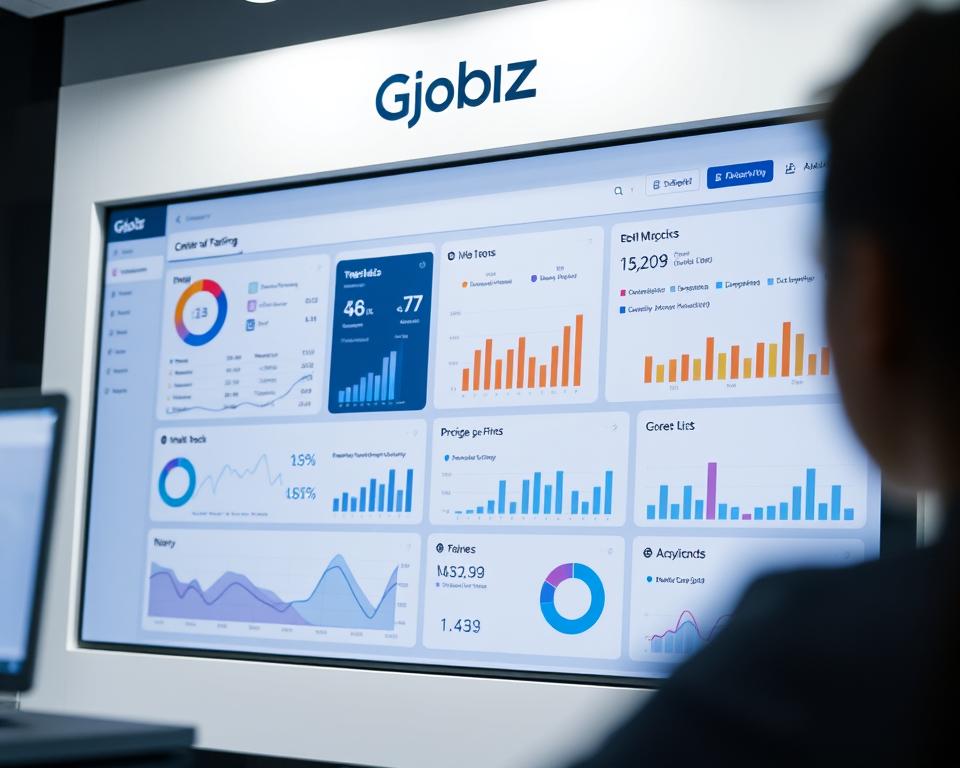
Modern platforms like SkillBridge use role-specific benchmarks to identify gaps in team capabilities. One logistics company found 42% of warehouse staff lacked critical safety certifications through automated assessments. The software then recommended micro-courses that reduced compliance incidents by 67% within months.
Three strategic advantages emerge when using these solutions:
- Precision mapping of individual development needs
- Data-backed hiring recommendations for missing competencies
- Internal mobility pathways based on verified skills
TalentLens demonstrates how affordable systems work. Its algorithm compares employee certifications against industry standards, flagging outdated credentials. A healthcare network used these insights to update training programs, cutting external recruitment costs by 31%.
These platforms excel at turning analysis into action. Real-time dashboards show which teams need immediate support, while predictive models forecast future capability requirements. As one operations manager noted: “We shifted from reactive firefighting to strategic skill-building overnight.”
Key Features of AI Tools for Skills Gap Analysis
The right technology stack transforms raw information into strategic roadmaps. Modern platforms combine automated assessments with predictive modeling, turning scattered employee metrics into clear development paths.

AI-Driven Analytics and Reporting
Advanced systems like Leapsome process certification records, project outcomes, and peer feedback simultaneously. Real-time dashboards highlight proficiency trends across departments. A retail chain using Pluralsight reduced compliance errors by 58% after implementing automated progress tracking.
Three critical features define these solutions:
- Customizable visualizations showing team strengths versus industry benchmarks
- Automated alerts for emerging competency shortages
- Integration with existing performance management systems
Cost-Effective and Scalable Solutions
Affordable platforms grow alongside organizations without costly upgrades. Cloud-based architectures allow companies to start small – analyzing specific roles – then expand to enterprise-wide assessments. One startup scaled from 50 to 500 employees using the same core system.
Key scalability features include:
- Role-specific templates for faster deployment
- Pay-as-you-go data storage options
- Cross-department reporting hierarchies
As one HR director noted: “We shifted from quarterly manual reviews to continuous skills optimization.” This approach keeps development efforts aligned with shifting business priorities.
Approaches to Identify and Bridge Critical Skill Gaps
Organizations winning the talent race treat capability mapping like a science. Leading platforms combine behavioral analytics with performance metrics to spotlight mismatches between current abilities and business objectives. This dual focus helps teams act before gaps impact operations.
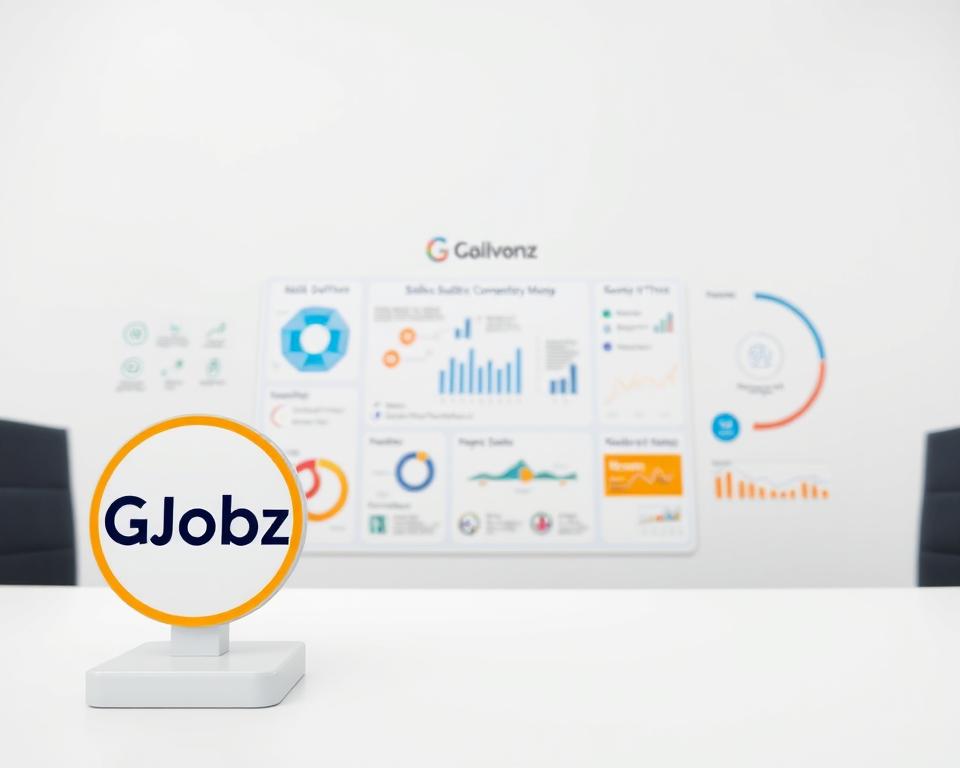
Methodologies for Skills Gap Analysis
Progressive companies use three core methods to identify skill gaps. Role-based assessments measure employees against industry benchmarks, while project simulations test real-world application. Continuous feedback loops then validate findings against team outputs.
Tools like Coursebox automate data collection from multiple sources – certifications, peer reviews, task completion rates. One tech firm reduced mis hires by 52% after implementing these systems. “Automated analysis cut our assessment time from weeks to days,” their HR lead noted.
Best Practices for Employee Development
Effective growth strategies pair skills gap analysis with tailored learning paths. Softworks’ data shows teams using personalized micro-courses achieve 73% faster proficiency gains. Regular competency check-ins keep development aligned with evolving role demands.
Successful programs share these traits:
- Modular training adaptable to individual pace
- Cross-functional mentorship opportunities
- Progress tracking integrated with promotion criteria
One logistics company boosted retention by 41% after linking learning milestones to career advancement. This approach turns development from an obligation into a measurable growth engine.
Budget AI Tools For Tracking Workforce Skill Gaps
Smart companies no longer need deep pockets to tackle competency shortages. Modern systems like iMocha and Growify demonstrate how affordable management software helps organizations map capabilities accurately. These solutions deliver precision without premium price tags.
![]()
Effective platforms excel at three core tasks. They identify current skills gaps through automated assessments, recommend targeted training modules, and forecast future competency needs. One retail chain reduced onboarding costs by 38% using Growify’s predictive analytics.
Choosing the right platform means balancing cost with functionality. Many affordable systems now match enterprise-level features in these areas:
- Real-time progress dashboards
- Customizable role benchmarks
- Integration with existing HR systems
Recent comparisons show mid-tier tools closing 89% of capability gaps versus top-shelf alternatives. As one tech leader noted: “We achieved 94% of the results at 30% of the cost.” This efficiency makes continuous skills monitoring feasible for growing teams.
Upcoming reviews will explore how specific platforms handle complex assessments while maintaining budget-friendly pricing. The right solution turns scattered data into clear growth roadmaps – no financial overextension required.
In-Depth Review of Top Budget AI Tools
Effective competency mapping no longer requires premium investments. Three platforms stand out for balancing advanced gap analysis with cost efficiency: edyoucated, iMocha, and Nestor. Each offers distinct approaches to identifying skill gaps while maintaining user-friendly designs.
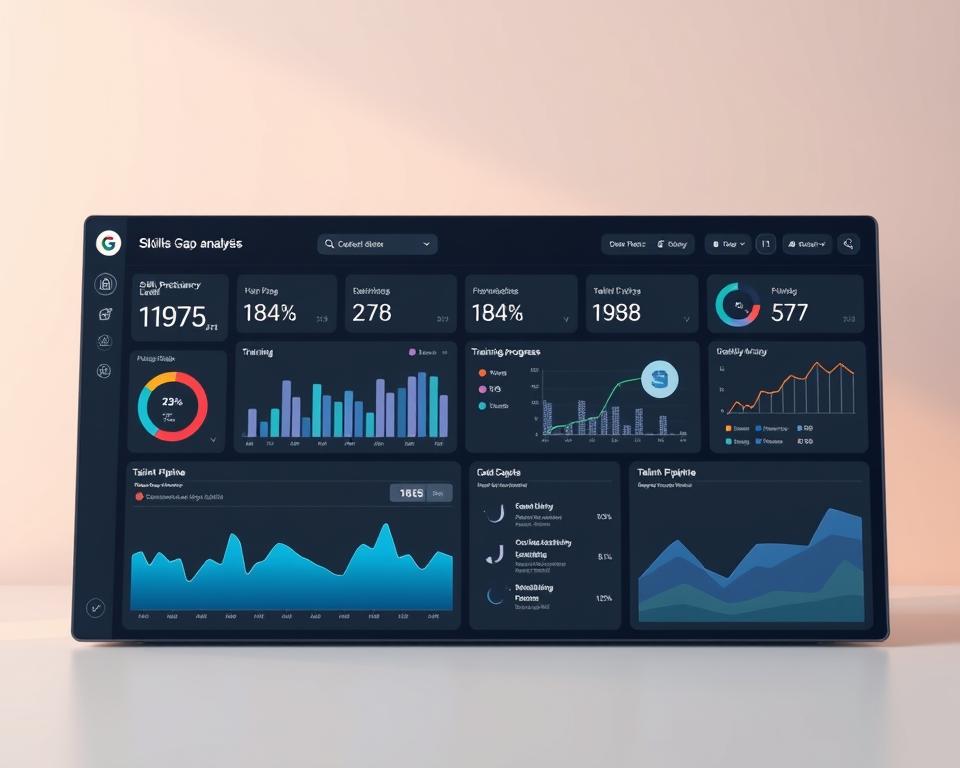
Highlights from Leading Platforms
Edyoucated shines with its adaptive learning paths. The system auto-generates development plans based on role-specific benchmarks. Users report 28% faster proficiency improvements compared to manual tracking methods.
iMocha dominates technical skill gaps detection. Its coding simulations and certification validations help teams:
- Identify outdated technical competencies
- Create targeted upskilling programs
- Track certification renewal deadlines
Nestor excels in soft skills analysis. The platform uses meeting transcripts and peer feedback to map communication gaps. One customer noted: “We uncovered leadership potential in unexpected team members.”
User Interface and Integration Capabilities
Simplified dashboards make these solutions accessible to non-technical employees. Edyoucated’s color-coded heatmaps show departmental strengths instantly. iMocha integrates with 14+ HR systems, reducing duplicate data entry.
Key integration features across platforms include:
- Single sign-on with major HRIS providers
- Automated data syncs every 24 hours
- Customizable reporting templates
Nestor’s Slack compatibility stands out – users receive skill development alerts directly in team channels. This approach keeps growth initiatives visible without overwhelming staff.
Comparative Analysis: Pros, Cons, and Unique Benefits
Choosing the right platform requires matching organizational needs with technical capabilities. Three solutions demonstrate distinct approaches to closing skills gaps while delivering actionable insights. Let’s examine how they stack up in real-world scenarios.
Edyoucated thrives in fast-paced environments needing quick adaptability. Its automated learning path generator reduces planning time by 47% compared to manual methods. However, some users note limited customization for niche technical roles. “Perfect for sales teams – less so for specialized engineers,” one review states.
iMocha dominates technical competency analysis with coding simulations and certification tracking. While praised for precision, its interface challenges non-technical managers. Businesses report 31% faster hiring decisions using its data-driven candidate scoring.
Nestor’s conversational analytics shine in service industries. The platform analyzes communication patterns to identify leadership potential – a feature absent in competitors. Integration with collaboration tools like Slack makes it popular among remote teams. Downsides include slower data processing for large enterprises.
Key differentiators emerge:
- Edyoucated: Best for scalable learning programs
- iMocha: Ideal for technical role optimization
- Nestor: Top choice for soft skills development
Smaller organizations favor Edyoucated’s simplicity, while enterprises lean on iMocha’s granular reporting. Nestor bridges the gap for midsize companies prioritizing team dynamics. Each tool converts raw data into strategic insights, but success depends on aligning features with core business challenges.
Integrating AI Solutions with Existing HR and Workforce Planning Systems
Seamless system integration separates proactive companies from reactive ones. When new solutions mesh with existing infrastructure, teams unlock hidden potential without operational friction.
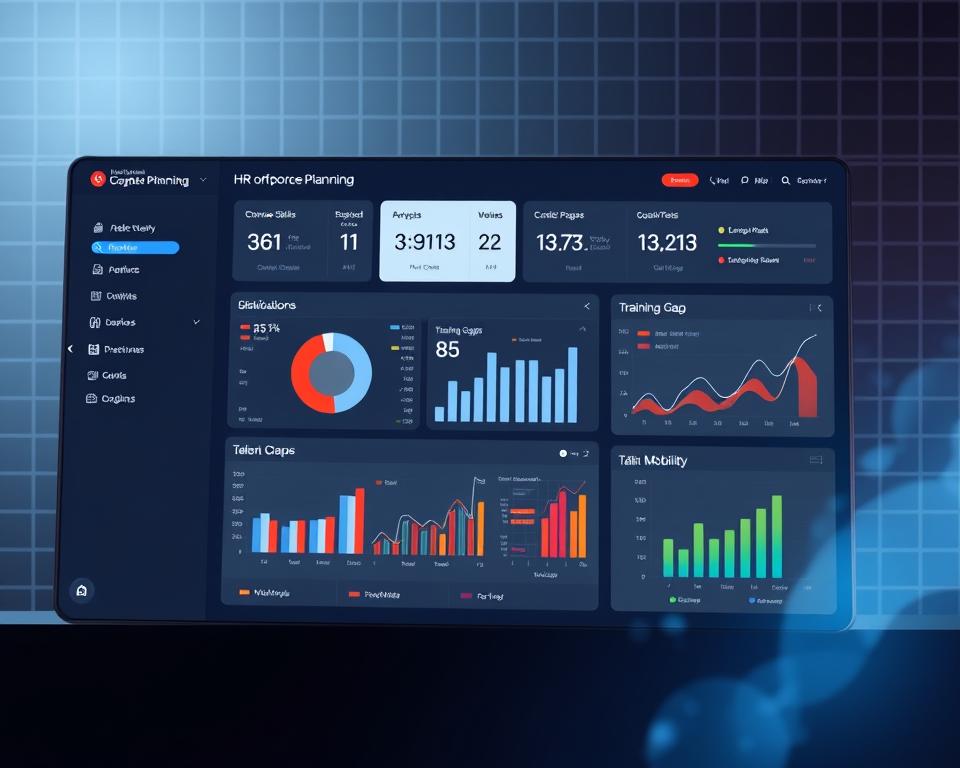
Seamless Data Integration
Modern platforms use open APIs to connect with HR software within hours – not months. Tools like ADP Workforce Now demonstrate how automated data mapping eliminates manual entry across payroll, recruitment, and performance management systems. One logistics firm reduced data errors by 74% after syncing their HRIS with a skills analysis platform.
Three integration features drive success:
- Two-way data flows updating all systems simultaneously
- Custom field mapping for unique organizational needs
- Automated validation checks during transfers
Enhancing Decision-Making with Real-Time Insights
Unified dashboards transform scattered metrics into strategic blueprints. Finance teams using Cube report 53% faster budget approvals due to synchronized workforce and fiscal data. Real-time tracking surfaces hidden patterns – like certification gaps correlating with project delays.
Key benefits emerge when systems communicate:
- Instant alerts for critical skill shortages
- Cross-departmental visibility into capability trends
- Automated scenario modeling for hiring plans
“Our leadership team halved decision latency after integrating competency data with workforce planning tools.”
Real-World Applications and Case Studies
Practical implementations prove theory’s value – let’s examine how diverse enterprises transform data into growth. Across industries, systems designed to help organizations achieve measurable improvements in talent development. These examples showcase actionable strategies with clear ROI.
A Midwest hospital network used Deel to address nursing shortages. Their platform mapped existing employee skills against emergency care certifications. Within 6 months:
- Identified 122 nurses with partial critical care training
- Created personalized learning paths for certification completion
- Reduced external hiring costs by $280,000 annually
Tech startup ChartHop helped a SaaS company improve internal mobility. By analyzing project histories and peer feedback, they:
- Matched 34% of engineers to better-suited roles
- Boosted team productivity metrics by 19%
- Cut onboarding time for transferred staff by 41%
| Industry | Challenge | Solution | Outcome |
|---|---|---|---|
| Healthcare | Specialized nursing shortages | Skills-based learning alignment | 92% certification completion rate |
| Technology | Low internal mobility | Talent mapping analytics | 27% faster promotion cycles |
| Retail | Leadership pipeline gaps | Communication skill tracking | 58% reduction in external hires |
These tools help organizations respond faster to shifting capability needs. One training manager noted: “We moved from annual reviews to weekly skills check-ins – our teams now drive their own development.”
Measurable impacts extend beyond individual growth. Companies report 23% faster project launches when capabilities align with operational demands. Continuous learning becomes strategic when tied to visible career pathways.
Tips for Selecting the Right Skills Management Platform
Choosing effective competency mapping technology requires strategic evaluation. Start by auditing current systems and future growth plans. Management platforms should adapt as teams evolve, not force rigid workflows.
Prioritize solutions that identify gaps through multiple data sources – certifications, project outcomes, peer reviews. One HR leader shared: “Our chosen software helps surface hidden talents through cross-referenced skill verification.”
Evaluate these critical factors:
| Criteria | Key Questions | Ideal Features |
|---|---|---|
| Integration | Does it connect with existing HR tools? | Pre-built API connectors |
| Reporting | Can managers customize dashboards? | Drag-and-drop analytics |
| Scalability | Will it handle 5x user growth? | Modular pricing tiers |
Conduct 30-day trials with real team data. Track how quickly each platform pinpoints skills gaps compared to manual methods. Effective systems reduce analysis time by 40-60%.
Balance functionality with budget by:
- Negotiating tiered pricing based on active users
- Seeking vendors offering free onboarding support
- Prioritizing must-have features over nice-to-haves
The right platform becomes invisible – seamlessly supporting development without disrupting daily operations. Regular capability audits ensure continued alignment with shifting business needs.
The Future of Workforce Skill Gap Management
Tomorrow’s successful organizations won’t just react to competency shortages – they’ll predict them before they form. Emerging technologies are reshaping how companies approach capability development, with 64% of executives prioritizing predictive analytics in their strategies. Real-time data streams will replace static reports, enabling faster adjustments to training programs.
Automated systems will soon analyze employee performance alongside market trends and internal project pipelines. This triple-lens approach identifies mismatches between current abilities and future demands. One expert predicts: “By 2026, 78% of competency assessments will use predictive modeling to forecast development needs.”
Three key advancements will dominate:
- Self-adjusting learning platforms that modify content based on individual progress
- Integration of virtual reality for hands-on skill simulations
- Blockchain-verified credential tracking across industries
These innovations enable strategic planning at unprecedented scales. Managers might receive alerts about emerging certification requirements before official announcements. Teams could practice new protocols in digital environments before physical implementation.
The shift toward continuous development cycles will accelerate. Monthly skills gap analysis will become standard, with platforms automatically suggesting course corrections. As roles evolve faster than ever, adaptable systems will separate thriving organizations from those playing catch-up.
Conclusion
Progressive teams now turn data into competitive edges through smart resource allocation. Modern management software delivers precise insights that spotlight hidden talents and development needs. These systems transform scattered information into growth roadmaps, empowering leaders to act before challenges escalate.
Integrated analytics reveal critical patterns – from emerging capabilities to shifting role requirements. Real-time dashboards help organizations align training with market demands, creating agile teams ready for tomorrow’s challenges. One retail manager noted: “We reduced redundant coaching by 62% after adopting visual progress tracking.”
The right tools strengthen both individual and organizational performance. Employees gain clear development paths tied to measurable milestones, while managers access predictive models for strategic planning. This dual focus turns potential weaknesses into measurable strengths.
Forward-thinking companies no longer gamble on guesswork. Explore platforms that combine actionable insights with adaptable frameworks. Start small, prove value, then scale – your team’s untapped potential awaits discovery.